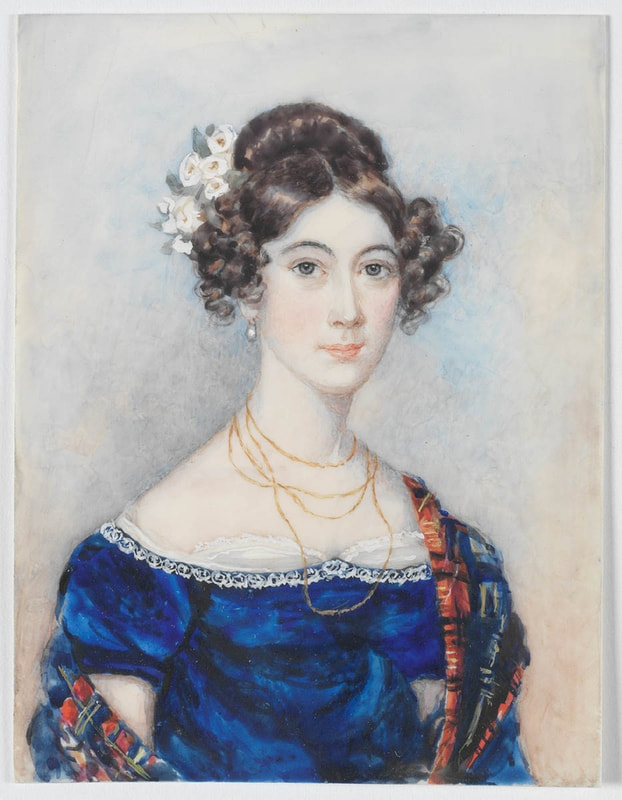|
It was 8th October 1792. After 6 months mostly packed below decks, guards ferry 49 female convicts and 297 male convicts from the ship Royal Admiral to the shore of Botany Bay. Among them, 15-year-old Mary Haydock finds time to write a letter home telling her aunt that the Governor had told her she was in for life, not the seven years sentence she had been expecting. In spite of this shock and finding herself 10,000 km from England, the young girl determined, ‘I will make myself as happy as I can in this unhappy situation.’ Mary’s simple words became reality in striking fashion. Orphaned at two-years-old, Mary was raised by her grandmother, educated and regularly taken to church in Bury, Lancashire. Unhappy in service as a housemaid, she ran away disguised as a boy. The thirteen-year-old was caught attempting to sell a stolen horse, sent to gaol and narrowly escaped the gallows with a 7-year sentence to Botany Bay. The fact that she maintained the pretence of being a boy until after her trial, says a lot about her pluck. Enter enterprising 25-year-old Irishman Thomas Reibey, newly settled in NSW and determined to make his fortune in the fledgling colony. He must have seen something in the 15-year-old convict girl, now serving in the household of LT Governor Grose, because he courted her and married her as soon as she turned 17. Colonial chaplain Rev Richard Johnson heard their vows in St Phillips Church in 1794 and the fact that all seven of their children were later baptised there, signalled that they were active in the community of faith.
Over the next decade-and-a-half, Mary and Thomas forged one of the most remarkable business partnerships in Australian history. They started by farming land on the Hawksbury River, then bought ships which they used to branch into international import/export trade to India and the Pacific. While Thomas was overseas, Mary managed the Sydney businesses as well as her growing family. She was reported to have made a long and precipitous ride on horseback through the Southern Highlands – this time almost certainly on one she owned! Mary proved herself a hard-nosed and spirited colonial lass in the rough and tumble business world of the male-dominated colony of New South Wales. When Thomas died in 1811 it should have ended the Reibey enterprise, but Mary was not intimidated. Instead, she expanded her reach by acquiring more land, ships and business houses. While she was willing to make money available, there’s evidence she wasn’t afraid to use the courts to make sure debtors didn’t run over her. In fact, in 1817 she was convicted of assaulting an evasive debtor! You can only guess that her faith added robustness to her business acumen because Mary earned a reputation as the friend and protector of emancipated convicts. Anglican Bishop Broughton commended her charitable spirit and commitment to the faith community of Sydney. It's significant that Mary drew a cohort of people of energetic evangelical faith around her who backed her enterprise. Most notable among them were Governor Lachlan Macquarie and his wife Elizabeth and Scots entrepreneur Robert Campbell – ‘the father of Australia’s commerce.’ They were determined to lift the business and social life of the colony above the desperate days when rum was the currency. Together they worked to express the teachings of Jesus in good governance, honest business dealings, robust support for education and the physical improvement of the colony. Mary shared the Governor’s passion for constructing fine buildings. They teamed up to launch the Bank of NSW in Mary’s house and it proved to be a secure base for future economic development. By 1817, the girl who arrived in the colony as a penniless, 15-year-old reject was estimated to be worth 20,000 pounds, now $3.5M. But Mary Reibey’s gift to Australia shouldn’t be measured in wealth, business or buildings. What is outstanding is the story of her resilience and determination to make the most of the hand dealt to her. She was unswerving in setting her God-given gifts to work to bless her family and those around her – particularly in helping people like herself to unshackle themselves from the stigma of being a convict. As time went by, Mary was asked to declare her status. She simply wrote ‘Free’ and everything about her said she was. PHOTO CAPTIONS
1 Comment
John Gibson
9/16/2022 08:34:54 pm
Great story of determination and faith against all odds. Hard work and guile make the world a different place.
Reply
Leave a Reply. |
AuthorJoin The Outback Historian, Paul Roe, on an unforgettable journey into Australia's Past as he follows the footprints of the Master Storyteller and uncovers unknown treasures of the nation. Archives
October 2023
Categories
All
|
|
Sponsored by
|
Privacy Policy
|
|
Copyright 2020 by The Outback Historian
|
Site powered by ABRACADABRA Learning
|






 RSS Feed
RSS Feed

